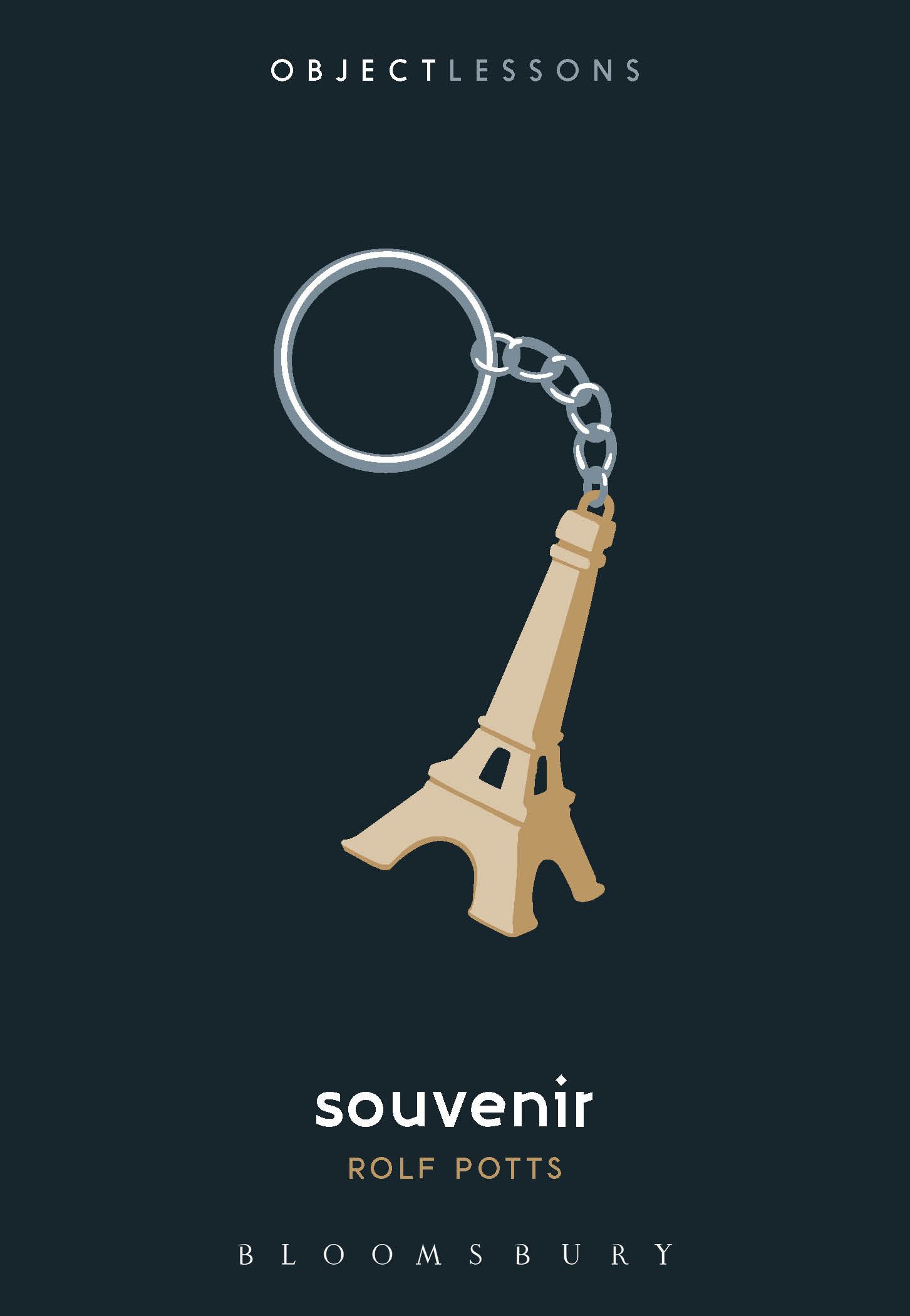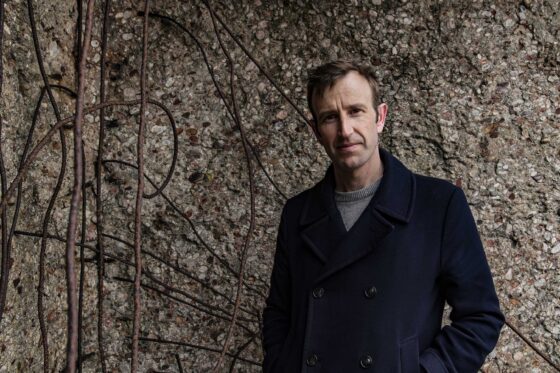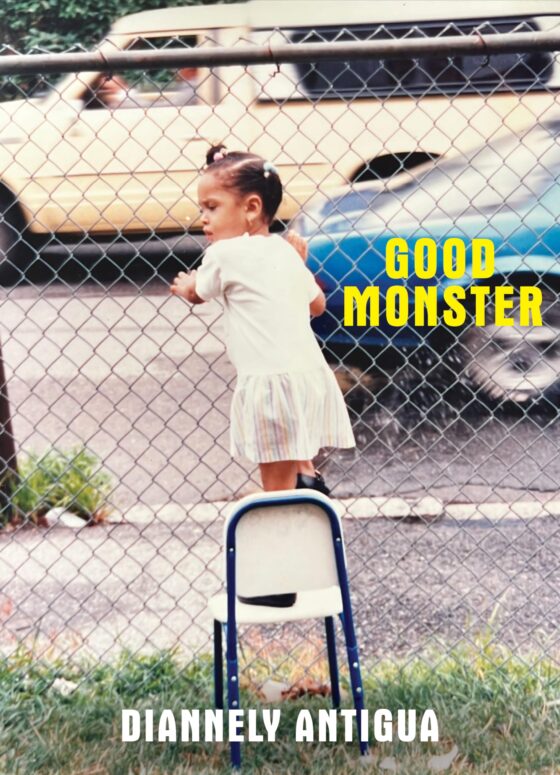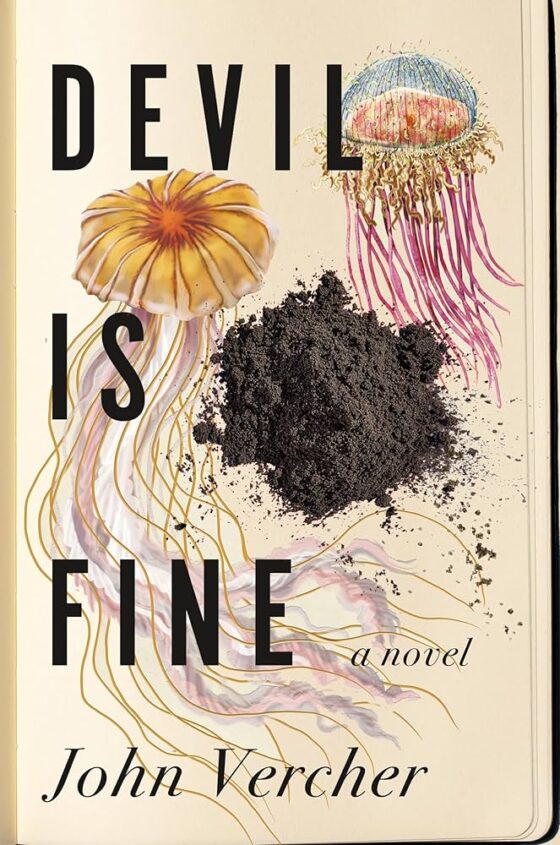
For nearly two decades, Rolf Potts has been writing travel essays both wild and meditative, entertaining and insightful, that follow his narrative persona through worlds of adventure, misadventure, loss, and discovery. His tales—two of which have been anthologized in The Best American Travel Writing series—appear in his books Marco Polo Didn’t Go There and Vagabonding, as well an array of publications. Amid these tales, an untold story has developed: the meta-narrative of Potts’s life as it has transformed over those decades, a story best told through the objects he’s collected along the way.
In his newest book, last month’s Souvenir, Potts guides readers through a philosophical, anthropological, and historical study of the objects we collect. Why do we buy souvenirs? What historical roots ground this ritual? Is one way of collecting souvenirs better than others? Potts shares stories behind his personal souvenirs, showing that uniquely personal emotions imbue our collected objects with meaning. Collecting souvenirs has been a way to mythologize his life, to externalize memories in a narrative form and maintain recollection of distant worlds.
I spoke to Potts about the personal, mythological element of souvenir collecting, unexpected parallels with Joseph Campbell’s The Hero’s Journey, and the inevitability of mortality.
***
The Rumpus: You write that souvenirs help us “mythologize our lives.” What does that mean?
Rolf Potts: A myth is much bigger than your average narrative. There’s the story of going to the market one day, and then there’s the mythic narrative that tries to explain how the world works. An item I mention in Souvenir is this riverboat propeller from this trip I took down the Mekong River in Laos. Some Americans and I bought a riverboat, and we drove this Laotian riverboat three weeks, eight hundred miles down the twelfth biggest river in the world. It was a crazy adventure. Probably kind of dumb, in retrospect, because it could have gone wrong in so many ways. But I have that boat propeller on my wall in a way that probably only I can appreciate because it’s just this banged-up boat propeller from a kind of boat that probably doesn’t even exist in the United States. But it’s a more mythological-level thing. It’s a way of reminding myself of something extraordinary that I did, that is so much bigger than my day-to-day life.
Rumpus: The more distant a memory becomes, the more it feels like it was of a different life—almost inherited, in a sense. Like the way we remember a dream. And then souvenirs become these physical, tangible objects of a dream lost. They champion the experience over the loss.
Potts: And in a way, memories could almost be understood as neurological souvenirs. Scientists say that memories are not really memories but re-memories. Memories we retain from a long time ago are things that we’ve had cause to return to. And so it’s rare that we think about something we haven’t thought about in twenty years. Usually, the store of memories we have are memories that we’ve sort of kept fresh by returning to them. Souvenirs are these iconic or idiosyncratic objects that we bring home and keep in our house or give to our friends. Over time, most of the documentary details of our own lives fall away. And in a way, the most salient memories we have from a long time ago—those mythic memories of fireflies at age five or your first kiss at age twelve—they, in a way, serve the same role as these physical souvenirs. They’re what have survived, symbolically, from the wash of other life experiences. They’re sort of a mythological remnant of a much broader set of life experiences, but they’ve come to symbolize certain times of our own lives at certain ages.
Rumpus: I can’t imagine how many experiences you have from your travels that you just can’t explain to people. The stories don’t register. I think that ties into that inherently personal nature of souvenirs.
Potts: That’s actually an observation I make in Vagabonding. That last chapter is really preparing people for the fact that as excited as they are about their own trip, it’s really impossible to impart—especially to people who are back home and haven’t had those experiences—the richness of the experiences you’ve had. And so, as travelers, I think we all end up in that category, even in the 21st century when we can livestream our own travels, when we can post three pictures to Instagram a day—yet still, memory can be elusive.
I remember crossing a river on a barge at night in Myanmar seventeen or eighteen years ago and reminding myself that I needed to remember this moment. It was so important, so beautiful. There were stars up in the sky, the river was much wider than I thought it was, the air temperature was perfect. And in a way my memories of that are memories of myself reminding myself to remember that. It’s become a meta-memory. I don’t remember the name of the river anymore. I wasn’t taking photographs. But my travels are full of experiences like that. I could bring my smartphone in 2018 and try to take photos of everything, but at the end of the day, something is going to be elusive. Something is going to be a memory that belongs to me alone in a way that is difficult to share, and continues to become more complicated the more you think about it.
Rumpus: That also elucidates the difference between a souvenir and a picture. You suggest that a souvenir is more associative, whereas a picture kind of frames the boundaries of the memory.
Potts: And a picture is very specific. When you take a picture, you aim it at something. There’s a very specific intentionality. Pictures are souvenirs. And postcards are souvenirs. But they’re different because though a picture has associational qualities, it’s much more directly informational than a souvenir, which exists almost entirely in terms of association.
In 2001, a hardcore vagabonding year for me, I maybe kept fifty-three pictures, cause I was shooting on film with a cheap camera. I wasn’t really prioritizing the pictures, because it was just harder and more expensive to develop film back then. So there was a time when pictures were very literally souvenirs, because you’ve got these physical prints, and they didn’t exist in a non-physical form. Now you can take thousands and thousands of pictures from a trip. They’re still souvenirs, but they’re more about digital information, more about documenting very specific things. When you take a picture of a mountain, it’s going to be very specifically about that mountain. When you pick up a rock off that mountain and put it on your shelf, it’s going to be more associational, more emotional, and it will probably resonate in ways that are more complicated and might even change in ways that the picture won’t.
Rumpus: And a lot of people approach pictures these days as a way of, “Hey, look where I’ve been!” But I think it’s still the same impulse, that strong desire to share something that is deeply personal by nature.
Potts: Well, souvenirs have always been accused of being status symbols, you know, conspicuous consumption saying, “Look where I went where you didn’t.” One of the knocks against Instagram is that it’s performative. Not only are you showing people where they haven’t been, you’re showing pictures that are more beautiful than the places may have been in real life. You’re waiting for the tourists to get out of the way so you can take a picture that makes it look like you’re standing in this beautiful landscape by yourself, when in fact you’re not and you may not even be enjoying it.
Rumpus: And then adding filters.
Potts: And making edits. So it’s easy to knock—and maybe there are people who are complete narcissists about the way they curate pictures in the world—but I think it’s still tied to memory. Even as we perform our travels, it is tied to a desire to hang onto memories and to make faraway places seem a little more real. And it goes back to the pilgrimage traditions I mention in the book. There’s a reason that relics and pilgrimage souvenirs were a very specific industry. Pilgrims traveled so far in very dangerous circumstances, and it really certified the trip when they came home. It reminded them that they had done something extraordinary. And in small ways, even the chintziest souvenir from a Paris gift shop is going to remind you of something that is kind of extraordinary, this great world city.
Rumpus: Something about what you just said made it click that this all follows that classic mythological structure, from Joseph Campbell’s The Hero with a Thousand Faces, of returning with the amulet. You leave the world of comfort and go to the special world of adventure and come back to the familiar with something tangible to signify the circumstances have changed.
Potts: It’s funny how that parallels the souvenir ritual in a curious way. It’s not the head of a dragon, you know? It’s not like souvenirs are as glamorous as amulets from the monomyth, but it’s true. In a way, yeah, we’re slaying a dragon. I write about how first-time travelers collect more souvenirs than more experienced travelers, and sometimes travelers who have less money spend a bigger portion of their budget on souvenirs than people who have more money. And I think there’s a monomythical aspect to that. If you’re a working class person, and you have a physically tough life, and you save enough money to go to Paris, then in a way, there’s a huge metaphorical dragon being slain when you come back with all your gift store stuff.
Rumpus: Like the Asian masks you write about collecting. You said that impulse started when you were teaching in Korea, when your friend displayed all his souvenir masks, and it created this dream in you to travel far and wide. So that became your impulse, not necessarily to represent the culture itself.
Potts: I realized long after I had started collecting these Asian masks that they were about desire. They were about the desire to travel before I ever left. They were about certifying what I had dreamed about. It’s funny, I stopped collecting the masks after a certain point in my travels, so it was kind of like, “I have those already. What do I really want?” So in a way that was the dragon—that I had moved through all my doubts, I had done all my work, I had saved all my money, and then I was collecting those masks to remind myself of those moments of dreaming about travel. But then how many dragon heads do you need? The object of the Hero’s Journey changes, you know?
It’s hard to write ten travel books in the course of your career that are all full of your heart and soul. Usually you have one journey that’s super personally meaningful to you, and then your travel books become more research-driven or reportorial or attached to certain objective themes. And so I think one reason why we collect souvenirs early in our travel careers—in a way we don’t later—is that those early travels resonate with a kind of Hero’s Journey energy. I think there’s an emotional resonance to the Hero’s Journey, and so we really do want the head of the dragon. And then eventually, we just get used to those basic symbolic reminders of what we’ve done. We become better travelers, but our journeys are less attached to the emotions of leaving home for the first time, of striking out into what was really the unknown. “The unknown” becomes different variations of a universal unknown that in time becomes more comfortable to us as travelers. So I think it makes sense: The academics I studied who observed that first-time travelers collect more souvenirs didn’t frame it in Joseph Campbell terms, but you could almost keep drawing that metaphor out. That it is a Hero’s Journey early on, and you need to certify the Hero’s Journey when you come back having slain the dragon.
Rumpus: And if I could take it a little further, there’s the stage of experiencing one’s death, in a sense, and then overcoming it. Like, the metaphorical death, and the resurrection, and then returning with this special knowledge, represented by this souvenir.
Potts: And there’s something very existential about souvenirs, in that you have overcome death. Even the pilgrims—I think there’s much more existential energy in the old Christian pilgrimage than we can appreciate in the modern day because it was so dangerous. You literally could die, and a lot of pilgrims did. And they went to the site of the Crucifixion. They were very much thinking in terms of life and death, and life after death, and things like that. And of course Joseph Campbell talks a lot about the eternity in the present, and things like that.
I end Souvenir on a very existential tone. When you think about it, we experience a kind of Hero’s Journey on our first big trip, we save the maiden, metaphorically, we conquer the dragon, metaphorically, we take the amulet in the form of a souvenir. But that souvenir is an object that is only meaningful in our own lifetime. It’s not going to be set up on the mountain of eternity. It’s going to lose its meaning when we lose our lives, right?
I inherited this alabaster elephant figurine from my recently deceased Aunt Lynda, and I can’t understand what it meant to her. I can’t understand why she kept that up until her death. And so, yeah, I think there is something very mythic in the process of collecting souvenirs. We may not consciously think about what’s going to happen to these souvenirs when we die, but I think it’s part of that memento mori realization. There’s something very existential about travel, and something very existential about what we choose to bring back things from our travels.
Rumpus: These items that are imbued with personal meaning become, at the passage of the person whom they were meaningful toward, just objects again. So lots of your book, and the personal reasons behind collecting souvenirs, made me think about solipsism. This depth of experience that can never be communicated or understood.
Potts: I think it’s because of that solipsism that souvenirs help us mediate our memories in a way that can’t be communicated, even if we sit down and try to tell our friends about them. I mean, some of the objects I found in this box from my Aunt Lynda were scrapbooks from her teenage years, with her best friends. So here’s all these cute teenage girls from the 1940s in this scrapbook—and she was very meticulous about keeping them—and they are obviously sort of the “cool girls”, and they were obviously close friends, and here’s this little album full of people who are no longer with us—my Aunt Lynda outlived most of her friends. So the energy contained in that album spoke to so many things at once. Somewhere in America, there’s an equivalent of these eight girls, like, the eight cute popular girls who run the high school. And someday they will be dead at age eighty-three, and all those memories will have a different energy. There was nobody I could give that album to. I could give it to the grandchildren of some of the women in that album, but they would be as completely flummoxed as me by who these people were. And so I think that these objects are specific—not just within one person, but within our interrelationships in life—they are specific to how we organize our memories in the present moment. There is no museum or mythic oracle mountain where all of our personal and cultural memories will be stored. They are only meaningful in real time. And I think that’s sort of the sadness of the book. They become fallen objects when the person to whom they gave meaning is no longer there. They become these objects that remind us to live richly because there will be a time when we are no longer alive.
***
Author photograph © Fritz Liedtke.





